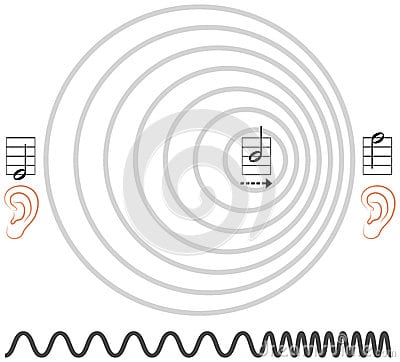Notes on Doppler Effect for Cambridge A level

This effect was first noted by Christian Doppler in 1842. The effect is widely used to measure velocities, usually by the reflection of a transmitted wave from the moving object, ultrasound for blood in arteries, radar for speeding cars, and thunderstorms. The velocities of distant galaxies are measured using the Doppler effect (the redshift).
What is Doppler effect? – It is the apparent change in frequency when there is a relative motion between the source and the observer.
As the source approaches

As the source moves away or recedes

V is the speed of sound
Vs is the speed of the source
Fs is the frequency of the source
F’ is the observed frequency by the stationary observer
Related Article: Note on direct current
The Doppler effect for electromagnetic waves such as light is greatly used in astronomy and results in either a redshift or blueshift. It has been used to measure the speed at which stars and galaxies are approaching or receding from us; that is, their radial velocities.
Red and blue shift: As the star moves away from the Earth, there will be an increase in wavelength and a decrease in frequency; this is redshift. As the star moves away towards the earth, the wavelength will decrease, and frequency will increase; this is blueshift.
